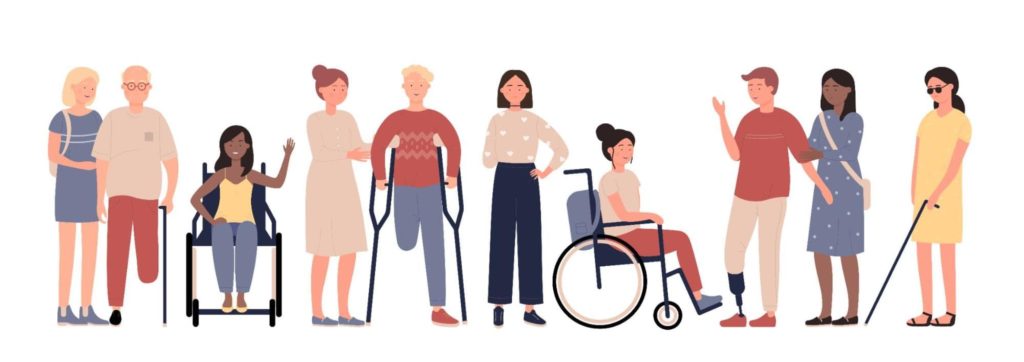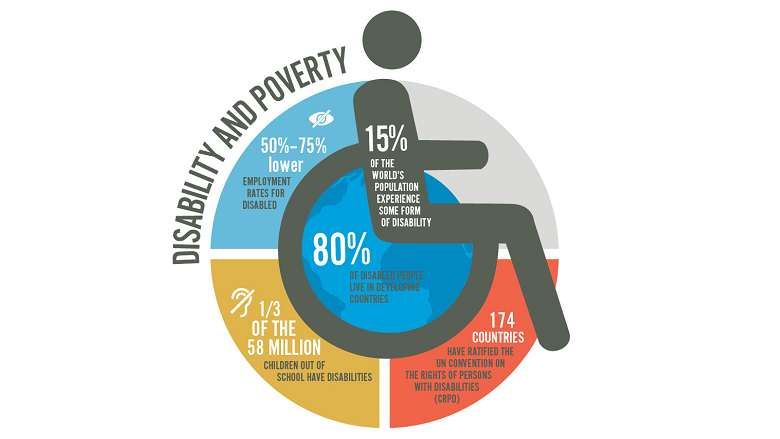History of Disability By Kaylee Cook
Historical and Contemporary Overview
Movements toward equality and better treatment of those with disabilities began gaining momentum in the 1900s (Marini & Stebnicki, 2018). Legislation such as the Smiths Fee Act, Vocational Rehabilitation Act, Social Security Act, Education for All Handicapped Children Act, and the Americans with Disability Act in the 90s brought great change and awareness to the discrimination of people with disabilities. Changes in legislation have deeply impacted the public perception and attitude towards those with disabilities as well as helped those with physical disabilities to gain greater access to public spaces. The United States is still affected by deeply rooted prejudice and stigmatization of disabilities, but the country appears to be moving towards equality and equity for those with disabilities. Marini and Stebnicki (2018) suggest that public opinion is strongly influenced by feelings of pity as well as admiration. Changes in law are not enough alone to obtain equality as there is still a need for changes in the perception of disability at the individual level in order to support laws advocating for people with disabilities. A law is nothing unless people choose to follow it. Greater recognition of disabilities in the modern era is likely to lead to much greater acceptance.
Visit the link to the side for more information: Timeline for History of Disability
Stereotypes and Stereotypical Thinking
There are several stereotypes and stereotypical patterns of thinking that people may apply when interacting with a person who has a disability. Stereotypes are widely accepted beliefs that are generalized, oversimplified, and often false. Stereotypes can be harmful as they can impact how people without disabilities react to people with disabilities. People with disabilities are sometimes stereotyped as child-like, helpless, dependent, unable, or worse attention-seeking (Shakespeare, 2013). However, Shakespeare (2013) asserts the reality of the situation by describing people with disabilities as normal people with strengths and weaknesses. People with disabilities need to be treated with equity. When given equal opportunity people with disabilities can achieve great things. There have been many famous people whether musicians or athletes with disabilities who have excelled in their careers, but these individuals likely faced harsh stereotypes. People with disabilities learn to live with their disabilities in the same way that every other person learns to live within their environment.
Stereotypes related to disability have in some ways changed over time. With the passing of laws such as the Americans with Disabilities Act, there has been a reduction in stereotyping of people with disabilities due to greater understanding among the public (Peacock et al., 2015). People fear what they do not know. In historical times, people with disabilities were labeled as cursed or insane and persecuted (Marini & Stebnicki, 2018). In the past, individuals with a disability were seen as weak and useless and even denied entry into the United States. Due to enhanced knowledge of disabilities in contemporary times and modern accommodations, these patterns of thinking have been minimized, but other stereotypes still persist.
Cultural Perceptions
A person's culture can affect how they view, understand, and interact with people with disabilities. For example, in traditional Native American cultures, the concept of disability is often absent (Marinin & Stebnicki, 2018). Native Americans see individuals with disabilities as the same as anyone, but as having a different way of functioning. Native American people will typically assist those who are disabled in engaging with the community, which is part of the reason that in Native American cultures, disability is not stigmatized. However, traditional Western views on disability are quite different. European Americans tend to have a culture that strongly values one's contributions to society and independence. In this culture, disability is often stigmatized as individuals tend to believe that disabilities are associated with inferiority and helplessness which contrasts cultural values. In modern times these beliefs are being challenged as people begin to see that people with disabilities can be independent and hard working.References
Marini, I., & Stebnicki, M. A. (2018). The psychological and social impact of illness and disability, (7th ed.). Springer Publishing.
Peacock, G., Iezzoni, L. I., & Harkin, T. R. (2015). Health care for Americans with disabilities — 25 years after the ADA. The New England Journal of Medicine, 373(10), 892. https://doi.org/10.1056/NEJMp1508854




Comments
Post a Comment